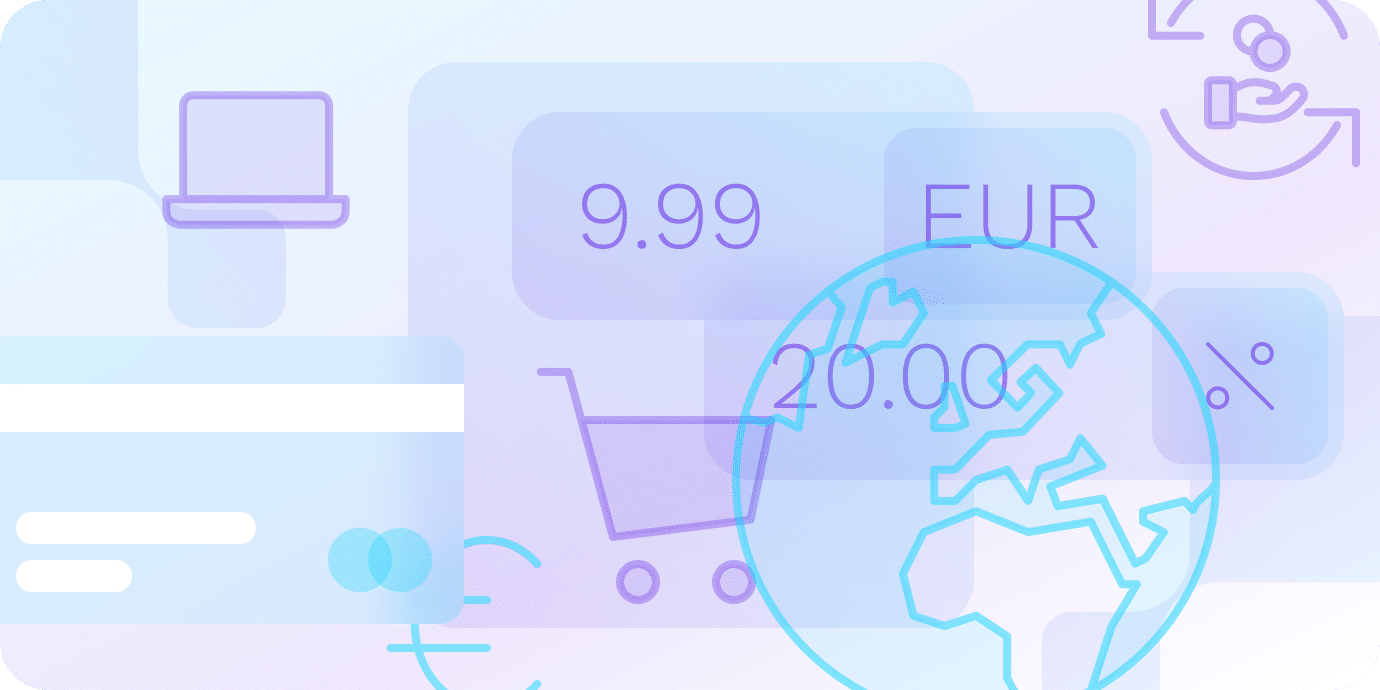SaaS決済
グローバル決済処理とは?
公開日: 2025年6月13日

グローバルペイメント処理とは?
グローバル決済処理は、国境を越えた取引を処理し、企業が国際的な支払いを受け入れることを可能にします。これらのクロスボーダー取引を促進するために、決済ゲートウェイ、金融機関、テクノロジーが相互に作用します。
COVID-19 以後、多くの小規模企業が海外事業の増加を経験しているため、グローバル決済処理は成長に不可欠です。SaaS企業は、事業の場所と規模に応じて、現地法人を必要とする場合もあれば、Merchant of Recordサービスを利用することで回避できる場合もあります。
グローバル決済システムをビジネスに利用するメリットとデメリットは何ですか?
グローバルに事業を拡大しようとする企業は、グローバル決済システムから大きなメリットを得られます。
- グローバル決済は、世界中の顧客からの支払いを受け入れることを可能にすることで、新しい市場と収入源を生み出し、ビジネスの成長を支援します。
- 高度な不正検出および防止技術を使用することで、セキュリティが向上し、会社と顧客を不正な取引から保護します。
- 現地通貨と多言語での支払いオプションの選択肢を提供することは、消費者体験に影響を与え、国際的な取引に影響を与える可能性があります。
- 通貨換算の自動化と国際基準の遵守は、国際取引プロセスに影響を与えます。
- 為替レートと多言語サポートを提供するグローバル決済処理業者は、企業の国際取引における支出に関連する可能性があります。
- グローバル決済は、顧客が海外から簡単に支払えるようにすることで、市場アクセスとビジネスの成長に大きな影響を与える可能性があります。
- グローバル決済システムの実装には、初期設定費用と既存システムとの統合の難しさが伴う場合があります。
- 利益率は、国内決済処理に関連するものよりも場合によっては高額な取引手数料と通貨換算レートの影響を受ける可能性があります。
- GDPRなどの現地税法および国際要件を遵守するには、法的助言が必要になる場合があります。これらの要件には細心の注意が必要です。
- 為替変動が徴収総額に影響を与える場合、収益予測は不明確になります。
グローバル決済ソリューションは、どのように国際取引を簡素化しますか?
クロスボーダー送金のための単一プラットフォームは、グローバル決済システムにおける国際取引のプロセスに影響を与える可能性があります。これは、コスト調整、効率性の変化、および国際的な顧客向けのさまざまな支払い方法のアクセス可能性に関連している可能性があります。
PayPal、Stripe、Squareなどのサービスは、非接触型決済、デジタルウォレット、クレジットカード/デビットカード決済など、さまざまな決済方法を促進し、テクノロジーを活用して送金と取引全体のエクスペリエンスに影響を与える可能性があります。
ビジネスに効果的なグローバル決済戦略をどのように策定すればよいですか?
包括的なグローバル決済戦略を策定するには、さまざまな決済オプションの提供、複数の決済ゲートウェイへの対応、決済トレンド、顧客の嗜好、法的要件などの市場要素の理解が必要です。
この戦略は、フィンテックコンプライアンスに関連し、複数の通貨と言語に対応し、地域ごとの設定を考慮し、ワークフローを効率化し、潜在的なコストメリットと銀行との関係構築のためにグローバル決済プラットフォームを活用します。
ターゲット市場(例:SMBとエンタープライズ)を理解することを最優先事項とし、市場の状況を監視してアプローチを改善しましょう。
グローバル決済プロバイダー間の主な違いは何ですか?
グローバル決済プロバイダーは、不正対策への取り組み、提供する決済方法の種類、法規制への対応方法がそれぞれ異なります。取引や通貨換算などの手数料の違いも重要です。
PayPalやStripeなどの一部の企業は、決済処理以外にも多くのサービスを提供しています。世界規模の決済プロバイダーを選択する際には、GDPRなどの地域規制やPCI DSSなどの国際基準の遵守が不可欠です。
グローバルなSaaS決済におけるユーザーエクスペリエンス(UX)を最適化して、コンバージョン率と顧客満足度を高めるにはどうすればよいですか?
海外SaaS決済のUXを最大化するには、スムーズでユーザーフレンドリーな、さまざまなユーザーニーズに合ったチェックアウト体験の開発を優先する必要があります。
T収益を生み出し成長を促進するには、手順を改善し、プラットフォームの統一性を確保し、リアルタイム決済と国際通貨換算機能を活用する必要があります。
さらに、消費者の不満を回避するために速度とパフォーマンスを優先し、包括的なデザインシステムを作成して 標準化されたユーザーインターフェース要素を提供し、豊富なナレッジベースを提供してユーザーエクスペリエンスをさらに向上させる必要があります。
SaaS企業が新しい国に進出する際に優先すべき戦略的考慮事項は何ですか?
SaaS企業は、事業拡大のための国を選択する際に、経済発展、市場の可能性、言語および文化の共通点、テクノロジーの採用率を考慮する必要があります。米国、英国、カナダ、ドイツ、オーストラリアなどの主要なSaaS導入国に投資することで、高いリターンが得られる可能性があります。
近隣または文化的に類似した市場から開始すると、移行が容易になることがよくあります。成功は、特にデジタルトランスフォーメーションへの強い要望がある国において、各ターゲット市場の特定の要件と法的枠組みに合わせてSaaSソリューションを設計することに依存します。
特にサイバーセキュリティの脅威に関して、グローバル決済の安全性を確保するために不可欠なセキュリティ対策は何ですか?
SSL暗号化、トークン化、および2要素認証は、グローバル決済のための重要なセキュリティ対策です。安全な決済環境を維持し、脆弱性を特定するために、 PCI DSSコンプライアンス と 定期的な侵入テスト が必要です。
3D Secure 2と不正管理システムは、検証および検出プロセスの追加を通じて、オンライン決済ソリューションに影響を与える可能性があります。企業はかなりの危険に直面しています データ侵害 これらの手順が実施されない場合、金銭的な損失が発生する可能性があります。
結論
グローバル決済処理は、世界中からの支払いの受け入れを可能にすることで、国際市場への進出を可能にする企業の能力に関連しています。
グローバル取引の長所と短所の理解、徹底した国際決済戦略の採用、ユーザーエクスペリエンスとセキュリティへの注力は、SaaS企業が障害を乗り越え、収益性に影響を与える能力に影響を与える可能性があります。